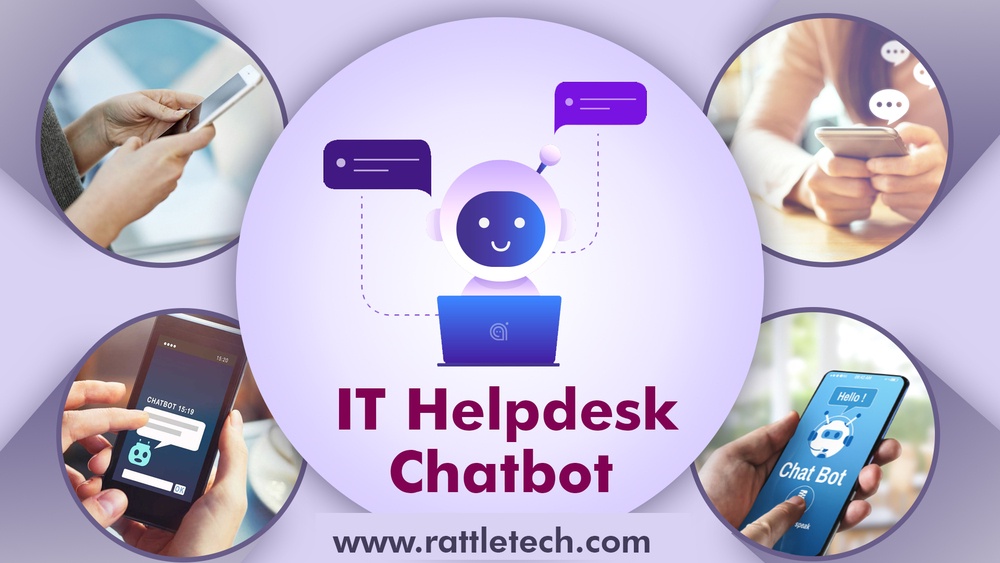In our current digital world, people are at ease when it comes to the usage of conversational AI and virtual assistants to do everything from booking their flight tickets to setting up an appointment with a doctor. Yet, despite this consumer-driven craze, one industry that is left largely in the dark is the IT help desk chatbot Surprisingly, for many enterprises, even something as basic as wanting to reset your password still requires opening and waiting for a ticket to be serviced.
How does a chatbot work for an ITSM (IT service management) help desk?
Let’s begin by exploring how a chatbot augments traditional IT service desk communication channels. Instead of filling out forms, composing emails or sending out a text message, a customer describes their queries or makes a request in natural language to the chatbot. If the chatbot requires any further clarifications or detects a negative sentiment in the speech tone of the customer, it will guide the customer to a live agent or ask multiple questions for additional information.
The chatbot draws knowledge and continuously learns from a variety of data sources in order to respond to the customer. These data sources continuously improve based on customer interactions. The chatbot will either resolve the customer’s query or request, resulting in a zero-touch resolution, or escalate the problem to a human agent. Even the best chatbots will occasionally require human intervention. If a human agent is unavailable, the chatbot will automatically create, categorize, prioritize, and assign a ticket.
How does a chatbot enhance an IT help desk?
1. Equipment Requisition
Chatbots in IT help desks allow employees to request and/or provision IT goods and services 24/7, regardless of location. For instance, a remote sales employee reports that their laptop is slow and needs to be replaced. Instead of calling the service desk and trying to get through to someone, the employee can state or type that they need a laptop. The chatbot submits a request to the manager for approval. Along the way, the chatbot can answer questions about software requests, company policy regarding devices, timelines for delivery, and specifications.
2. Password Reset Request
Password reset is the most common ticket for the service desk. Agents spend a lot of time resolving this transactional query. With the introduction of virtual assistants, password resets are easily handled without any manual intervention.
3. Provision of Access
Chatbots can understand the type of request, requester job title, and department, and send the information to the relevant management so the employee can be granted access to the relevant application. Similarly, chatbots can automate de-provisioning for users.
4. Answering FAQs
Chatbots can be used to answer both tech support and end-user questions by integrating seamlessly with the knowledge bases of your organization – including information contained within FAQs, websites, and wikis, regardless of format.
5. Onboarding/Offboarding Employees
Today, service requests like employee onboarding are either manually coordinated by technicians or based on predefined automations. Chatbots can handle this task easily, guiding new or leaving employees with what they need to do and which forms to fill.
Top Benefits of Implementing Chatbots in ITSM
1.Reduce Costs
Since labor costs dominate IT service management expenses, minimizing human intervention without sacrificing service quality is essential. Driving adoption of self-service technology to minimize the gamut of tickets has been at the forefront of the ITSM agenda for several years. Chatbots can interact through text voice and answer the most common queries, freeing IT staff to work on business growth initiatives.
2. Better Customer Satisfaction
Chatbots automate tasks, such as customer follow-up, status updates, and recurring service requests, freeing up time for support analysts who can then work on more interesting projects that generate direct business value. This eliminates drudgery, and ultimately helps employee retention.
3. Enhancing decision-making and IT support
By combining previous data showing the success rate of similar situations in the past, the chatbot can greatly improve the decision-making process of an organization. Prediction of future trends in the IT sector can also greatly benefit from the use of chatbot in ITSM. It can estimate the necessity for IT personnel in the future and the need for support according to the requirements of the field.
Rattle Tech has an expert team developing intuitive chatbots. Get in touch for a free demo today!


No comments yet